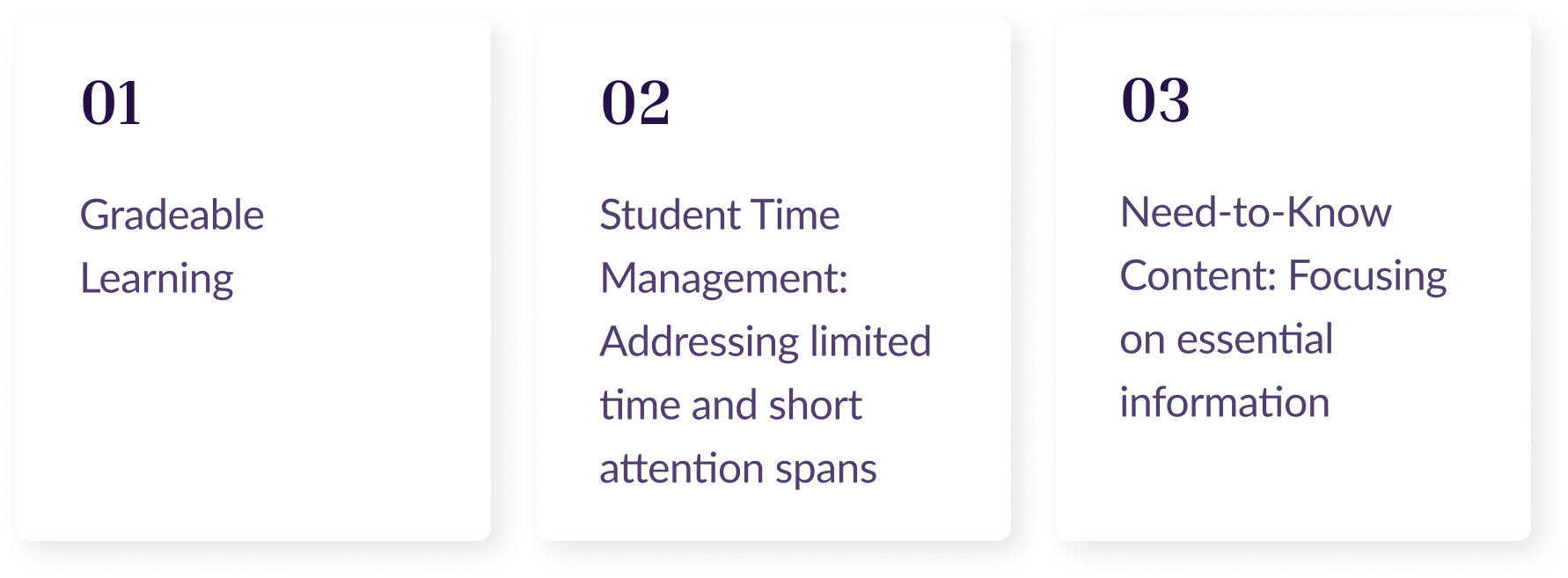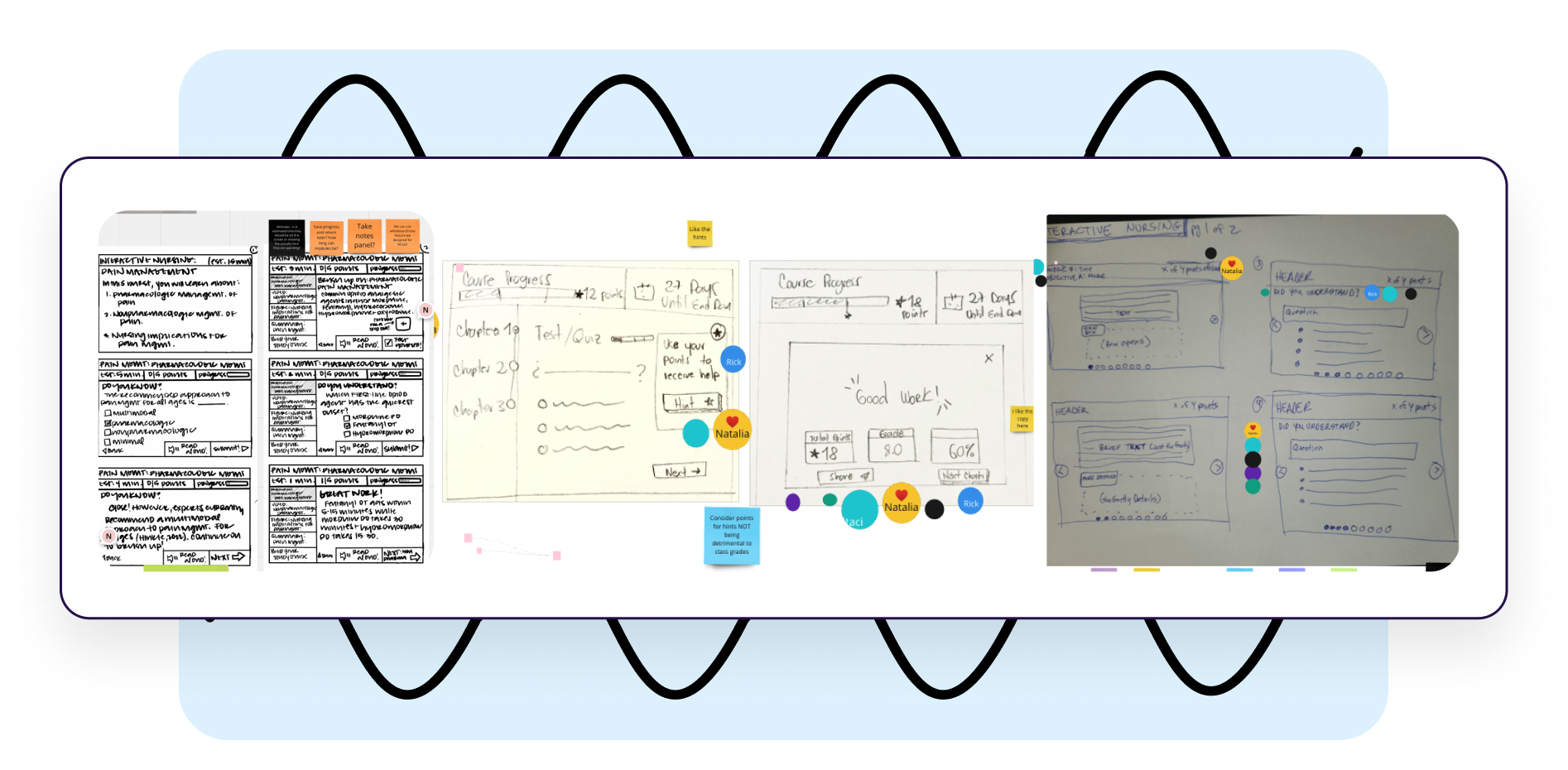Creating the Knowledge Burst: Innovating Content for Maximum Engagement
Discovery . Research . Sketching . Prototyping . Google Sprints . Usability Testing . Lean Product
Overview
Wolters Kluwer is a global provider of professional information, software solutions, and services across various sectors, including health. This time, they were seeking a new educational format for Nursing Education that engages both students and instructors.
Client
Wolters Kluwer, USA, Netherlands
Duration
Present
Role
As a Senior UX/CX Designer, I have guided all ideation and design activities. At the same time, I have coordinated efforts with researchers, designers, product managers, content creators, and developers.
My work has included leading workshops, synthesizing information, preparing interviews with customers and experts, creating wireframes and prototypes, designing the user testing plan, and leading the development of the testing module.
The most interesting aspect of this project has been the opportunity to wear different hats, from research to strategy, while leading the development of the module using a completely new tool for me, called Storyline, and coordinating teams from various disciplines.
Main Problems
In 2023, during our preliminary opportunity interviews, we learned:
01
Students are not reading the materials, which affects both instructors’ and students' comprehension and retention in nursing education
02
High-quality content goes unused if students do not engage with it.
03
Customers are exploring alternative content delivery models, such as ATI Engage, that utilize "chunked" content.
During our preliminary opportunity interviews, we learned:
Students Voice
Design Process
Due to the limited time and resources available to develop an innovative proposal to transform the knowledge acquisition model in Nursing Education, I, as the unique designer, decided to conduct a design sprint.
This five-day process involved answering critical business questions through design, prototyping, and testing ideas with customers.
Design Team
- Technology Product Management Director
- Senior Content Editor
- Manager, Content Editing
- Senior Technology Product Manager
- Lead Technology Product Manager
- Senior CX/UX Designer
DISCOVERY STAGE
Mapping User Experience
Based on the findings from last year's interviews, I mapped students' knowledge acquisition experiences in collaboration with other team members. This process begins with exploring content and selecting what they will study.
During this journey, I identified that students primarily focus on assigned and graded tasks and tend to read information only if they believe it will be on the exam.
Additionally, I hypothesized that students will seek outside sources if they cannot reuse available resources or if the currently assigned resources are perceived as tedious.
Expert Interviews and Business Opportunities
We discussed assumptions and I conducted "Ask the Experts" interviews, including a product representative, a sales and marketing representative, and a "Friend of the House" who could represent the customer's voice.
The main business opportunities identified after the interviews were:
Selecting the primary problem to address
To synthesize the information from our research activities, I used various AI tools to streamline the process and guide the team in formulating "How Might We" ideas. This helped us identify the following opportunities to address:
DESIGN STAGE
Solution Sketching and feature selection from various sketches
Each team member independently developed solutions based on our gathered assumptions, then came back together as a team to present and vote on standout features and aspects to include in the prototype.
In this activity, it was essential for me, as the UX representative, to keep the team focused on the students' needs. From this perspective, I shared visual references, basic pre-built components, and encouraged limitless imagination, so we could start sketching ideas.
Curated content chunks
Progressive content disclosure
Content variety (text, video, audio, images, etc.)
Progress visualization
Read aloud capability
Low-stakes integrated quizzes
Gamified progress
Summary and note taking
Ticket to Class
Prototyping
This stage was all about strategically using the design system I have been developing for all Health products. This approach ensured a streamlined process, allowing us to conduct testing as quickly as possible.
Unified Design Mockup: I created a comprehensive mockup that encompassed all the standout and top-voted features.
UX/UI Review and Pattern Identification: I thoroughly examined the existing design system and identified potential reusable patterns and components.
Refined and edited throughout the day, arriving at an approach that met the minimum requirements.
To address the issues encountered by students, and after brainstorming, the prototype was defined as 'Knowledge Burst' (KB).
Feedback from students and Instructors
After developing the Knowledge Burst (KB) module prototype and confirming its effectiveness with instructors and students, we found that it not only received a great reception but also addressed multiple challenges:
DELIVERY STAGE
Platform Definition and User Testing
After intensive research and analysis of the necessary features for the final product, I proposed using Storyline 360, a tool I had previously worked with. Storyline 360 is an online training tool designed to build interactive custom courses. This allowed us to create a fully functional testing prototype where:
We can test all features with users.
We can have graded modules and export a format compatible with Wolters Kluwer's LMS.
We eliminated the need for the development team and focused on content and module execution with an instructional designer.
Collaboration with Content
As part of the solution to use Storyline as the primary tool for Knowledge Bursts, the focus was on the content's importance. I led a series of workshops with the content team to map out the process for delivering the content in chunks. During these workshops, we considered the volume of content, the different formats, and the key players involved in curation and creation.
Business Impact
O1
About 60% of revenue was attributed to the technology change. We transitioned from having a development team creating one module per month to a group of instructional designers producing 4 modules per month using Storyline.
O2
The reduction in module creation time was achieved by streamlining the content creation process, minimizing back and forth between content and product.
O3
This initiative strengthened the partnership between Globant and Wolters Kluwer and opened up new projects to continue developing KBs.












